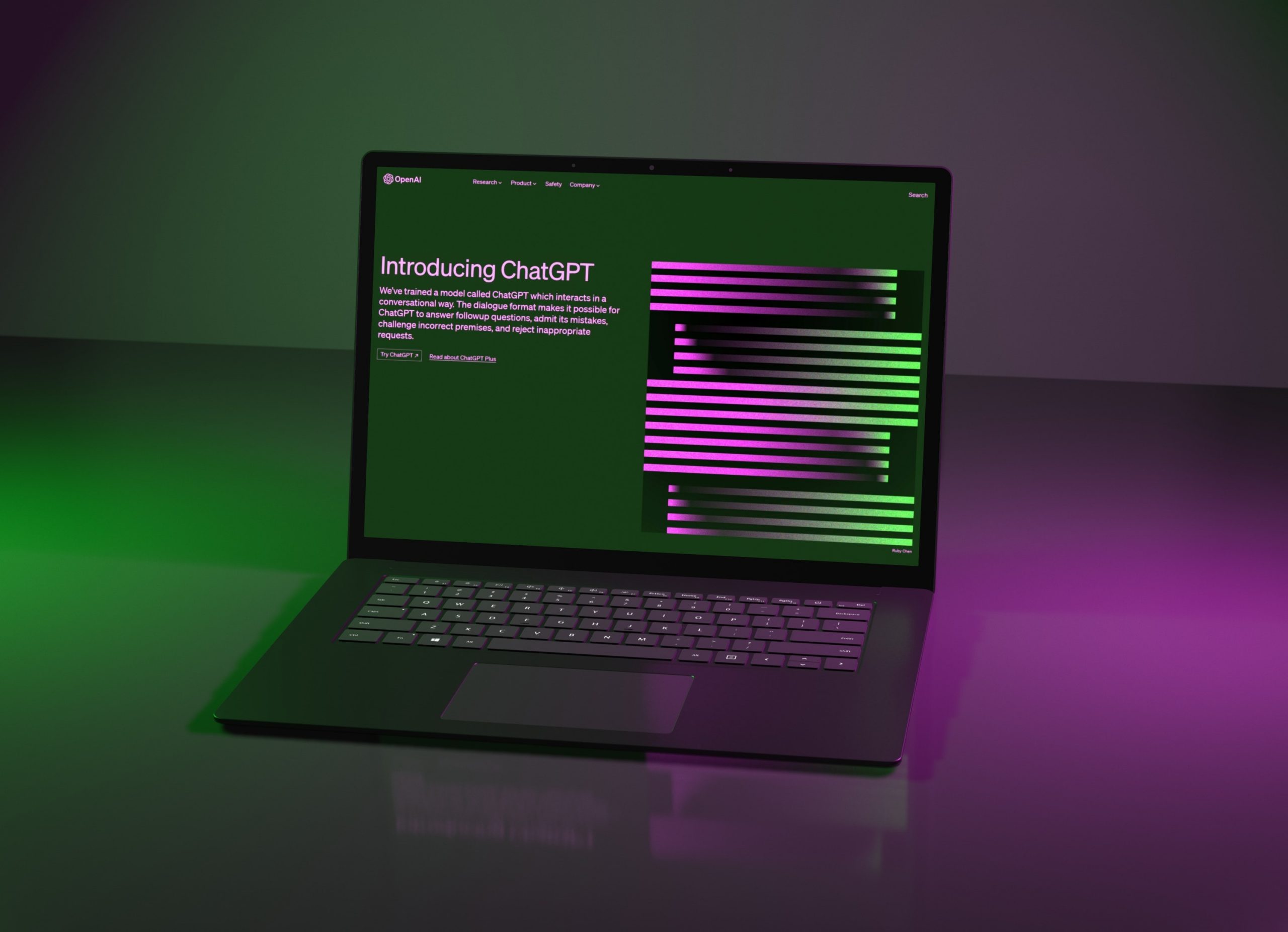Managing student data across various departments, campuses, and online programs is no longer a back-office task; it’s a mission-critical challenge. As education becomes increasingly hybrid and data-driven, schools and universities are under pressure to modernize how they track grades, attendance, enrollment, and academic performance. Outdated systems, siloed spreadsheets, and manual processes can’t keep up with today’s expectations for real-time access, integration, and compliance.
The urgency is reflected in the numbers. The global Student Information System (SIS) market is expected to more than double from $15.33 billion in 2024 to $32.04 billion by 2029, growing at a CAGR of 15.9%. It’s about adaptability. A survey by Quality Matters and Eduventures Research found that 80% of colleges and universities had already adopted SIS or other digital tools to support online learning in the wake of the COVID-19 pandemic. Institutions that delay modernization risk falling behind in student engagement, administrative efficiency, and data security.
At WeSoftYou, we’ve guided multiple education-sector clients through SIS development: from early-stage planning to system integration and compliance testing. In this article, we’ll break down everything you need to know about building a Student Information System: key features, technology stack options, security considerations, and best practices for a smooth rollout.
Core Components of Student Information Systems
A well-designed Student Information Software goes beyond simply storing student records. Instead, it should be the digital backbone of your institution. At its core, it connects data points across departments, helping educators understand the full picture of each student’s academic journey.
What Constitutes a Student Information System?
A Student Information System (SIS) is a central hub for managing every facet of a student’s academic life. From enrollment and class schedules to attendance, grades, billing, and communication, an SIS brings it all together in one platform. What sets it apart from basic database tools is its ability to connect these modules seamlessly, creating a unified experience for administrators, teachers, students, and even parents.
Our experience at WeSoftYou shows that the most impactful SIS solutions don’t just manage data; they help make sense of it. When analytics and reporting are built into the system, schools gain valuable insights into student performance, engagement, and retention risks. This kind of visibility allows educators to step in early with support, personalize learning experiences, and ultimately drive better academic outcomes. An SIS, when thoughtfully designed, becomes a powerful tool for student success.
Key Student Information System Features
While the specifics can vary depending on the institution’s size and needs, certain features form the backbone of any successful SIS:
| Component | Description |
| Student Enrollment and Registration | Automates the admission process, capturing essential student details and managing class assignments. |
| Attendance Tracking | Real-time monitoring of student attendance with alerts and notifications for absences. |
| Gradebook and Assessment Management | Allows teachers to enter grades, calculate averages, and generate report cards. |
| Scheduling | Manages class timetables, exam schedules, and resource allocation. |
| Billing and Financial Management | Handles tuition payments, scholarships, invoices, and payment tracking. |
| Communication Tools | Facilitates secure messaging between teachers, students, and parents. |
| Data Security and Compliance | Ensures the system meets standards like FERPA and GDPR for data privacy and protection. |
Incorporating these features thoughtfully ensures the system not only meets operational demands but also remains intuitive for all users. A well-designed SIS should reduce friction, not add to it, especially for non-technical users like teachers, students, and parents.
AI and ML Are Shaping the Future of SIS
The integration of artificial intelligence (AI) and machine learning (ML) is becoming standard. These technologies can analyze large sets of student data to provide personalized learning paths, flag students at risk, and even suggest curriculum changes tailored to classroom trends or individual needs.
Planning and Analysis: The Foundation of Successful SIS Development
Every effective Student Information System starts with a clear understanding of who it serves and what they need. Rushing into development without this clarity often leads to misaligned features, underused tools, or even complete rework. Taking the time to map out user roles, daily workflows, and system expectations ensures that the final product truly supports educational operations from technical and human standpoints.
Identifying Stakeholders and Their Needs
Before writing a single line of code, it’s essential to understand who your system is serving and how. For example, successful K–12 Student Information Systems are built around the daily realities of their users: administrators, teachers, students, parents, and IT teams. Each group brings a different perspective and set of priorities.
What Different Users Expect from a Students Information System Software
- Administrators prioritize data accuracy, performance tracking, and compliance-ready reporting tools. They need a system that helps them make strategic, data-informed decisions.
- Teachers value fast, intuitive access to class rosters, schedules, and grading tools, features that save time and reduce administrative overhead.
- Students want a straightforward interface to monitor their academic progress, submit assignments, and stay on top of schedules and deadlines.
- Parents look for transparency and real-time communication, allowing them to stay informed about grades, attendance, and school activities.
Engaging these groups early (through interviews, surveys, or simple conversations) helps uncover what matters to them. These real-world insights shape a platform that doesn’t just function, but truly serves its users.
Market Research and Competitive Analysis
At WeSoftYou, we’ve seen time and again how early market research can shape the outcome of an EdTech project. Understanding what’s already out there, what works, what frustrates users, and where the gaps lie gives your team a critical head start. It’s not about copying features; it’s about identifying opportunities to build smarter.
More than 80% of educational institutions are adopting cloud-based SIS solutions, largely due to their scalability and remote accessibility. That statistic alone should inform architectural decisions from the outset. By studying competitors, you might uncover missing features, like poor mobile UX or limited third-party integrations, that your system can address. Keeping an eye on evolving trends, such as AI-driven personalization or voice-based interfaces, ensures that your Student Information System app remains relevant and competitive well beyond launch.
Regulatory and Compliance Considerations
Handling student data comes with serious responsibility. Compliance with data protection laws like FERPA in the U.S. and GDPR in Europe is foundational. But treating compliance as a checklist item isn’t enough.
Security and trust go hand in hand. Parents and schools want to know that their data is handled with care. Building in safeguards like role-based access, end-to-end encryption, and audit logs demonstrates that you take privacy seriously. And just as important as the tech are the people: training your team on secure data practices and staying updated on legal changes helps prevent missteps down the road. A compliant SIS isn’t just legally sound, it also strengthens your reputation and builds long-term confidence among users.
Designing the Architecture of the Student Information System
The architecture of your Student Information System determines how well it performs, scales, and adapts over time. A thoughtfully designed system starts with a modular, service-oriented structure that allows each core function (enrollment, grading, or billing) to operate independently while staying connected through secure APIs. This flexibility is key to integrating with learning management systems (LMS), payment gateways, and third-party communication tools.
Choosing the Right Technology Stack
The technology stack behind your Student Information System plays a critical role in its performance, scalability, and long-term maintainability. Most modern SIS platforms are built using cloud-native infrastructure, microservices architecture, and responsive front-end frameworks to ensure flexibility and ease of use across devices.
At WeSoftYou, we typically recommend a stack that includes:
- Backend: Node.js, Python with Django, or Java Spring Boot robust options for building scalable, API-driven services.
- Frontend: React, Angular, or Vue.js each capable of delivering intuitive, responsive interfaces for users across roles.
- Database: PostgreSQL or MongoDB depending on whether structured relational data or flexible schema designs are needed.
- Cloud Platforms: AWS, Azure, or Google Cloud for secure, scalable infrastructure and managed services.
Why Modularity and API-First Design Matter
By prioritizing modularity and an API-first approach, institutions gain the ability to integrate seamlessly with third-party platforms, such as Learning Management Systems (LMS), financial tools, or messaging services. This architectural flexibility enhances the system’s overall functionality and enables smoother operations across academic and administrative teams.
User Experience and Interface Design
A well-designed interface plays a critical role in the success of any Student Information System. Poor UX can frustrate users and slow adoption, while a clear, intuitive design improves efficiency across all roles: teachers, administrators, students, and parents. This is especially true for College Student Information System Software, where users often interact with complex workflows like course registration, academic advising, and degree tracking.
Features like role-based dashboards, custom views, and mobile-friendly layouts enhance usability. Gathering real user feedback early through usability testing helps uncover pain points and refine the experience. Adopting a consistent design system ensures the interface feels familiar and seamless, making the platform easier to navigate for everyone involved.
Data Security Architecture
Security should be built into every layer of a Student Information System, not added as an afterthought. This includes data encryption (both at rest and in transit), multi-factor authentication, role-based access control, and routine security audits.
At WeSoftYou, we follow industry standards like the OWASP guidelines to prevent common threats such as SQL injection and cross-site scripting (XSS). We also conduct regular penetration tests and vulnerability assessments to proactively uncover risks. Beyond technical safeguards, educating users on best practices, like strong passwords and phishing awareness, is essential.
Development and Implementation Strategies
Turning a well-planned SIS into a functional platform requires a structured, iterative approach. From selecting the right development methodology to setting clear milestones, the implementation phase lays the groundwork for long-term success.
Agile Methodology for SIS Development
Adopting an agile approach offers the flexibility and responsiveness needed for building Student Information Systems in dynamic educational environments. It supports iterative progress, continuous improvement, and strong collaboration among all stakeholders.
Key benefits of using Agile for SIS development:
- Iterative sprints: Breaks the project into manageable modules (e.g., enrollment, attendance, billing) with early functional delivery.
- Continuous feedback: Frequent sprint reviews and demos ensure alignment with user needs and allow for real-time adjustments.
- Cross-functional collaboration: Developers, administrators, and educators work closely together, reducing miscommunication and rework.
- Faster time-to-value: Schools can start using key features before full system completion, accelerating adoption and utility.
- Risk mitigation: Early testing and validation help identify issues early, lowering the chance of costly changes later on.
Agile should become your mindset to deliver smarter, more adaptable SIS platforms tailored to real-world needs.
Integration with Existing Systems
Educational institutions frequently already rely on a variety of digital tools: Learning Management Systems (LMS), finance platforms, communication apps, and more. For a Student Information System to deliver its full value, seamless integration with these systems is essential. Without it, data silos, manual duplication, and inefficiencies quickly emerge.
Key integration priorities include:
- LMS integration to synchronize grades, attendance, and coursework in real time.
- Finance system integration to automate billing, fee tracking, and scholarship processing.
- Communication tool integration to streamline parent-teacher messaging and notifications.
The Role of APIs, Middleware, and Data Governance
Using APIs and middleware ensures smooth data exchange and system compatibility, allowing the SIS to function as a centralized hub rather than a standalone tool. Standardized protocols help maintain interoperability, while a strong data governance framework protects integrity and ensures compliance with regulations like FERPA. When executed well, integration transforms the SIS into a connected ecosystem that supports efficiency and informed decision-making across the institution.
Testing and Quality Assurance
Comprehensive testing is essential to ensure your Student Information System performs reliably under real-world conditions. It’s not just about making sure features work it’s about validating usability, security, and scalability from every angle.
Key areas to cover include:
- Functional testing. Verifies that all modules (e.g., enrollment, grading, billing) operate as expected.
- Performance and load testing. Simulates peak usage periods, like registration weeks, to ensure the system can handle high traffic without lag or failure.
- Security testing. Includes penetration testing and vulnerability assessments to protect against data breaches.
- Usability testing. Involves real users to uncover interface pain points, unclear navigation, or overlooked friction in everyday tasks.
Our team emphasizes user involvement throughout the QA process. Testing with actual stakeholders often surfaces critical insights that wouldn’t appear in code reviews alone. After launch, continued monitoring and user feedback loops help refine and improve the system, ensuring it evolves alongside the institution’s needs.
Deployment, Maintenance, and Scaling
Rolling out a Student Information System doesn’t end with deployment. A successful launch requires careful planning, data migration, user onboarding, and post-deployment support. But even more important is what comes next: maintaining performance, addressing issues quickly, and scaling the system as the institution grows.
Cloud vs. On-Premises Deployment
Cloud-based deployment offers scalability, remote access, and reduced infrastructure costs, making it the default choice for many educational institutions. However, on-premises solutions may still be preferred in cases where data sovereignty, compliance constraints, or legacy infrastructure come into play. For example, institutions managing highly sensitive student data may be required to store it within specific geographic regions, or they may wish to leverage existing on-site hardware to avoid the costs of migration.
Based on our deep technical and educational expertise, we help clients navigate this decision by assessing their technical requirements, growth expectations, and compliance landscape.
Ongoing Maintenance and Support
Launching an SIS is just the beginning; ongoing maintenance ensures the system stays secure, stable, and up to date. This includes deploying bug fixes, security patches, and feature updates. A dedicated support team is essential to minimize downtime and quickly resolve issues before they disrupt school operations.
We recommend our client follow a proactive maintenance and user-centered feedback approach. Regular system monitoring and staff training sessions keep performance high and users confident in the platform. By listening to real-world user input, you can prioritize updates that matter most. This way, the system evolves in step with institutional needs.
Scaling for Growth
As user numbers and data volumes increase, the SIS must scale efficiently. Future-ready systems are built with containerization, load balancing, and database sharding in mind. These approaches help maintain performance, distribute workloads evenly, and reduce latency, which is critical during high-traffic periods like registration or exam time.
Institutions also benefit from real-time monitoring tools that track system performance and forecast scaling needs before bottlenecks occur. Combined with an adaptive infrastructure strategy, this ensures long-term reliability.
Why WeSoftYou is the Right Partner for SIS Development
SIS development is a domain we’ve studied, delivered in, and improved through real-world partnerships with educational institutions. Our approach is shaped by years of hands-on experience, a deep respect for the complexity of education systems, and a commitment to delivering solutions that are both technically sound and human-centered.
Proven Experience in Education Technology
We’ve helped public and private institutions move from fragmented, inefficient systems to centralized, scalable platforms. One of our standout contributions:
- Built a K–12 data management platform that unified student profiles across districts.
- Reduced administrative workload through automation and smart workflows.
- Cut district onboarding time, enabling faster scaling and service delivery.
These are measurable improvements that impact how schools operate every day.
Built for Scale and People
We bring together seasoned software engineers, AI specialists, and product designers who know how to solve for both performance and usability. Our typical SIS project includes:
- Cloud-native architecture for performance and flexibility.
- Microservices and modular design for easy updates and integrations.
- AI-powered analytics to track student engagement and identify at-risk learners.
- Role-based UX to meet the needs of administrators, teachers, parents, and students.
Engineered with Discipline and Quality
What sets us apart technically is our rigorous process. WeSoftYou operates on a proprietary framework of 36 quality standards, ensuring delivery that’s reliable, scalable, and maintainable over time. This commitment enables us to:
- Detect and fix potential issues early.
- Align technical execution with long-term goals.
- Ensure compliance with regulations like FERPA and GDPR.
Recognized for Innovation and Trust
- Ranked among the Top 1% software developers on Clutch.
- Named “Innovator of the Year” by Forbes.
- Selected by the U.S. Government and Fortune 500s for high-stakes software projects.
We build platforms that people rely on. And in the context of education, where stakes are high and budgets are tight, that reliability matters.
Wrapping Up
Developing a Student Information System is an institutional shift, as it requires thoughtful planning, deep empathy for diverse users, and a long-term vision for how technology can meaningfully support education. From architectural decisions to integration strategies and post-launch scaling, each step in the process plays a role in shaping the daily experiences of students, educators, and administrators alike.
In an environment where educational demands evolve rapidly, a well-designed SIS can offer stability, adaptability, and insight. But it takes more than writing clean code; it takes the ability to listen, to design for real-world needs, and to build for the future. At WeSoftYou, we’ve helped schools and organizations do exactly that.
If you’re looking for a team that combines technical expertise with a grounded understanding of the education sector, we’re here to help, starting with a conversation.
Frequently Asked Questions (FAQ)
What is the typical timeline for developing a Student Information System?
The timeline varies depending on the system’s complexity and feature set but generally ranges from 6 to 12 months. Agile development practices can shorten time-to-market by delivering core modules early. During the initial phases, we conduct thorough requirements gathering and stakeholder interviews to ensure that the system aligns with the specific needs of the institution. This collaborative approach not only helps in refining the project scope but also fosters a sense of ownership among the users, which is crucial for the system’s long-term success.
How do you ensure data privacy in SIS software?
Data privacy is ensured through encryption, strict access controls, compliance with regulations like FERPA and GDPR, and regular security audits. WeSoftYou implements these measures as standard practice. Additionally, we conduct training sessions for all users to raise awareness about data handling best practices and the importance of maintaining confidentiality. By creating a culture of data responsibility, we empower users to recognize potential threats and take proactive steps to safeguard sensitive information.
Can the SIS integrate with existing Learning Management Systems?
Yes, integration is a key part of SIS development. APIs and middleware enable seamless data exchange between SIS and LMS platforms, ensuring synchronized information across systems. This integration allows for real-time updates on student progress, attendance, and grades, providing educators with a holistic view of student performance. Furthermore, custom integration solutions can be developed to meet the unique requirements of different institutions, ensuring that the SIS complements existing workflows rather than disrupting them.
Is cloud deployment more advantageous than on-premises?
Cloud deployment offers scalability, flexibility, and cost savings, making it ideal for most institutions. However, on-premises deployment may be necessary for organizations with specific security or compliance requirements. Cloud solutions also facilitate automatic updates and maintenance, reducing the burden on IT staff. Institutions can benefit from enhanced collaboration features, allowing educators and administrators to access the system from anywhere, fostering a more connected educational environment. Nevertheless, we work closely with clients to assess their unique needs and determine the best deployment strategy for their situation.
How do you handle user training and onboarding?
WeSoftYou provides comprehensive training sessions, documentation, and ongoing support to ensure all users, from administrators to teachers, can effectively use the system. Our training programs are tailored to different user roles, ensuring that each group receives the specific knowledge and skills they need. Additionally, we offer a variety of resources such as video tutorials, FAQs, and a dedicated support hotline to assist users post-launch. By investing in thorough onboarding, we aim to minimize resistance to change and promote a smooth transition to the new system, ultimately enhancing user satisfaction and engagement.





















